Reviews
How Do You Tell Photography’s History? ICP’s Big Birthday Show Embodies the Struggle
"ICP at 50" shows how radically photographic practice has expanded—and the challenges that expansion has caused.
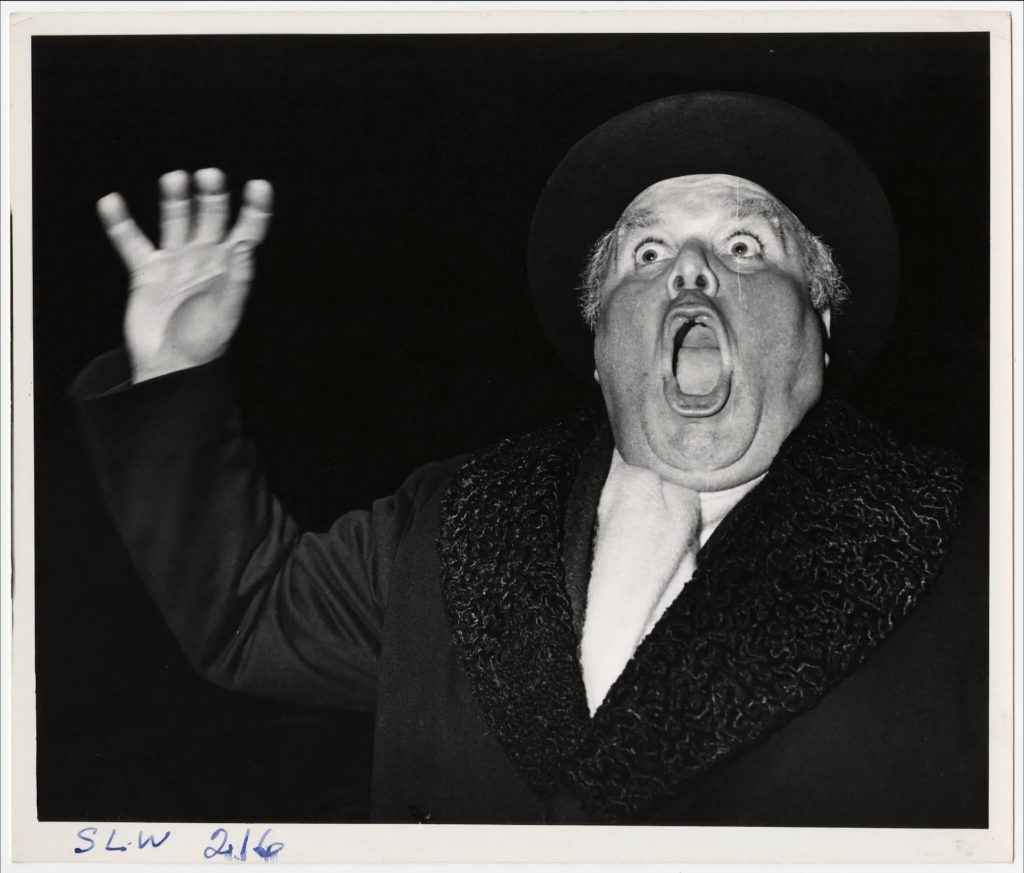
"ICP at 50" shows how radically photographic practice has expanded—and the challenges that expansion has caused.

Ben Davis

What do I want from a history of photography now? That’s what I was asking myself as I went through the International Center of Photography show “ICP at 50: From the Collection, 1845-2019,” the stimulating survey of highlights from the New York museum’s holdings, curated by Elisabeth Sherman and staged for its golden jubilee year.
Here’s a well-known bit of trivia, showing how art’s relation to photography has shifted over time: Before the 1990s, the work of Cindy Sherman was collected by the Museum of Modern Art’s department of painting and sculpture, not its department of photography. Sherman had become famous for her “Untitled Film Stills,” using herself as a model and staging scenes that evoked classic Hollywood movies. But though she worked with photos, Sherman wasn’t considered a “photographer.”
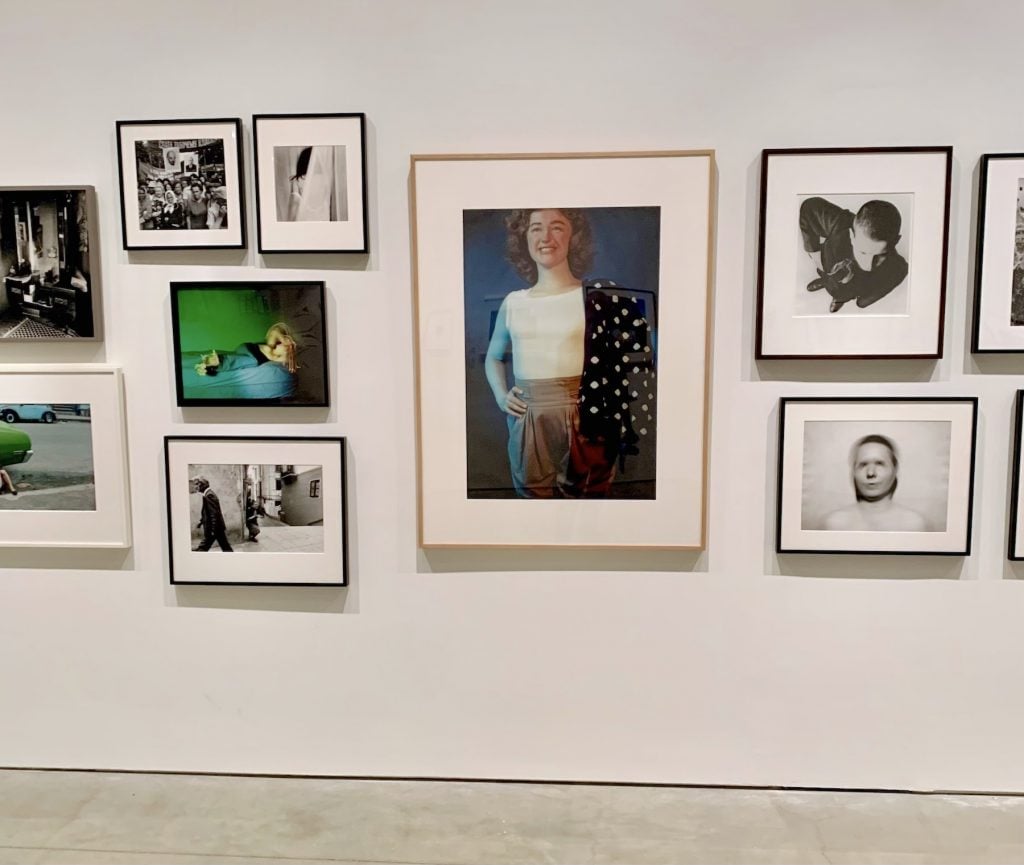
Cindy Sherman, Untitled #118 (1983) in “ICP at 50.” Photo by Ben Davis.
Critic Douglas Crimp described the debates over where Sherman belonged as more than academic. He thought that photo-conceptualism was a kind of intellectual timebomb in the museum, set to eventually go off and expose how incoherent the idea of categorizing art by media was—photography vs. sculpture vs. performance, etc. The genre the museum had valorized as “art photography,” Crimp thought, actually represented a very narrow idea of what photos could be, focusing on technical prowess. And photography’s full embrace of Sherman would be “the moment in which one would recognize that the way the museum organizes itself is in some form of crisis.”
The angst inspired by such questions is greatly diminished now—not just at MoMA, but here at ICP, an institution dedicated to celebrating the craft of photography. Cindy Sherman appears smack dab at the center of the history being unspooled in “ICP at 50.” Her work Untitled #118 (1983) centers a crowded wall in the show’s second gallery showing diverse modes of photography from the ’80s. When she was named an ICP trustee in 2022, the artist told the New York Times, “I sensed that the organization, in asking me to participate, wanted to branch out from its more traditional roots and be seen in a broader sense of how photography is being used today.” That could also be the thesis statement of this show.
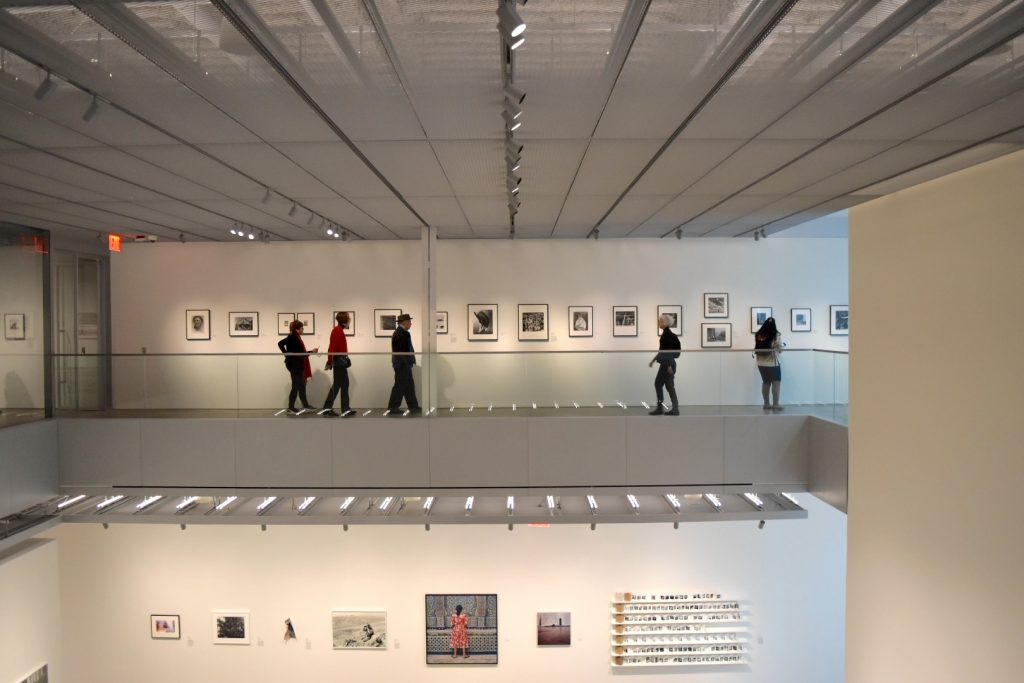
Installation view of the two floors of “ICP at 50.” Photo by Ben Davis.
The story “ICP at 50” tells starts with 19th-century experiments, tiny tintypes, early panoramic photos, hand-colored studio portraits, and such. The long mid-section of the show, representing photography’s heroic age, spans roughly the ‘20s to the ‘70s, when photography came into its own as a self-conscious professional and aesthetic community. The highlights here are too many to enumerate, and liberally include oddities and offbeat works by famous names, to convey the eclectic approach to image-making the show wants to emphasize.
There’s a certain notable focus on moments of self-conscious artifice. Gordon Parks appears, not by his classic Civil Rights images, but by a stunning photo-illustration staging a scene from Ralph Ellison’s Invisible Man. Weegee appears, not by one of his New York crime photos, but via a picture of actor Peter Bull on the set of the film Dr. Strangelove, frozen mid-yell.
This classic era’s vigor and magnetism clearly comes from the particular status of the photographer during this period: the rise of a new medium brought potential new and popular audiences, yet taking good photos was still considered skilled work, requiring knowledge of a technical piece of equipment. In photojournalism, this led to a certain sense of dignified urgency that came from the belief that photographers have a special role in shaping public perception of important events; in fashion photography, to an aura of rarified glamor connected to the feeling that a special skillset was being brought to bear on a sitter’s image.
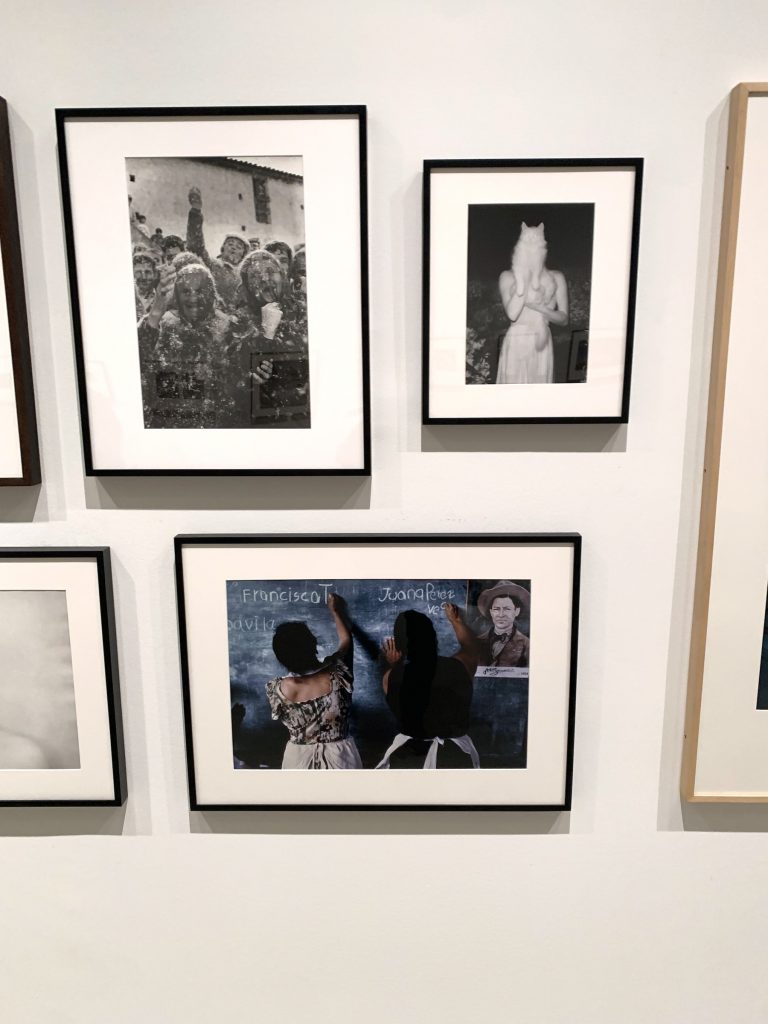
Top row: Cristina García Rodero, La Tabua (1985) and Masaaki Miyazawa, Once Upon a White Night (1985). Bottom: Susan Meiselas, Alphabetization campaign for market sellers, Nicaragua (1980). Photo by Ben Davis.
Cornell Capa founded ICP as a museum in 1974 to evangelize and preserve the tradition of “concerned photography.” That was the name for a style of socially engaged, formally rigorous documentary photography, most famously associated with the Magnum photo agency—and Cornell’s older brother Robert, the great war photographer who died on assignment for Life in Vietnam, in 1954.
Near to Sherman’s painting-scaled Untitled #118 is a smaller, roughly contemporaneous photo by Susan Meiselas (current president of the Magnum Foundation), a late, great example in that tradition. It is a gorgeously colored 1980 chromogenic print from her famous reportage on Central American conflicts, capturing two teachers at a blackboard, engaged in a literacy campaign aimed at the poor in Nicaragua. (A wall label calls it an “alphabetization campaign,” but I believe that is a mistranslation from the Spanish.)
This juxtaposition of Sherman and Meiselas, for me, symbolizes a pivot point in the story. Indeed, one potential reading of “ICP at 50” is that shortly after the institution put down roots a half century ago, the discipline of photography itself became painfully self-conscious.

Gerda Taro, Republican Militiawoman Training on the Beach, outside Barcelona (August 1936) in “ICP at 50.” Photo by Ben Davis.
Up to a certain moment in “ICP at 50,” the big names you will remember are people like Ansel Adams, Henri Cartier-Bresson, Walker Evans, Robert Frank, Lee Friedlander, Helen Levitt, Gordon Parks, Gerda Taro—a canon recognizably set apart as “photographers.” After, the figures who dominate are Louise Lawler, Bruce Nauman, Shirin Neshat, Martha Rosler, Laurie Simmons, Carrie Mae Weems—basically, names that one would see as key to any survey of post-‘70s contemporary art, at any art museum, possibly grouped under the unlovely catchall “lens-based practices.”
(The exhibition accompanying “ICP at 50” for the institution’s birthday year, “David Seidner: Fragments, 1977–99,” is much more in the vein of honoring a photo-specific figure who hasn’t gotten his due. My colleague William van Meter is covering it separately.)
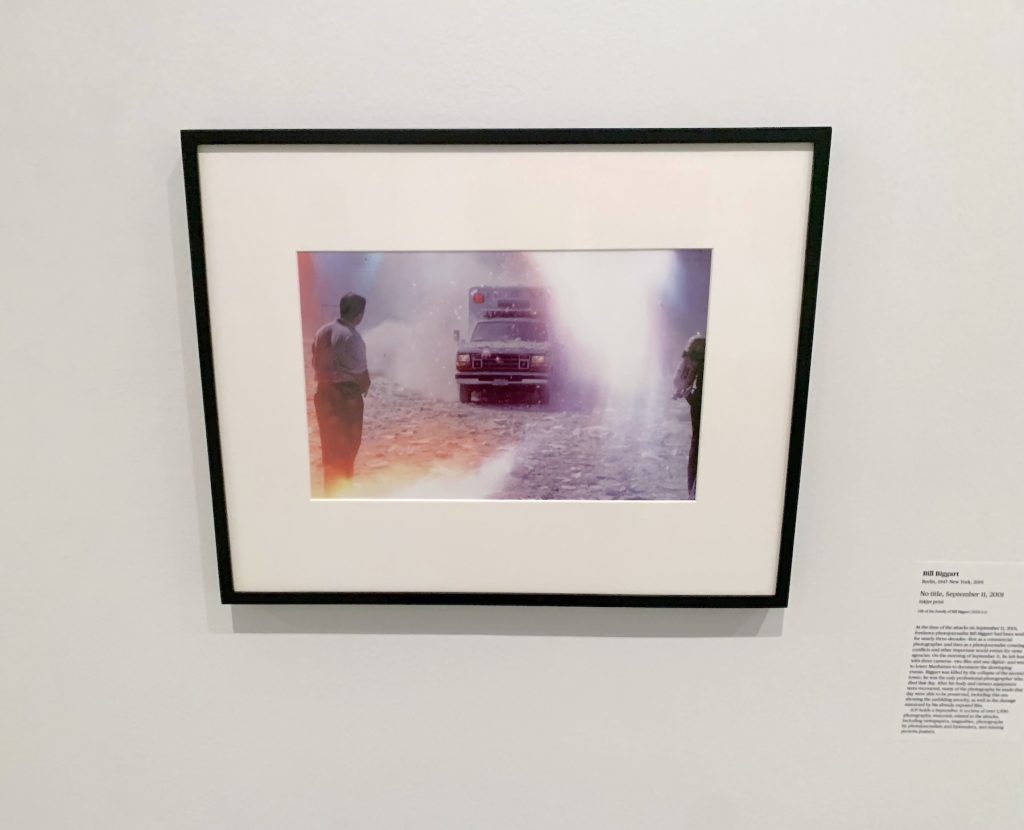
Bill Biggert, no title (September 11, 2001) in “ICP at 50.” Photo by Ben Davis.
ICP director David Little is keen to stress what this show says about the flexibility of the museum’s mission, how the institution has always been hip to “photography in all of its forms,” not just Capa’s “concerned photography.” One of the last photos in “ICP at 50” that actually might fit that foundational rubric—documenting an unfolding reality in an impactful way—is Bill Biggert’s hazy, haunted image of New York on 9/11, which shows an ambulance trundling through dust and rubble. Yet this image also shows how untenably high the bar is for such journalistic images to feature in this narrative: The picture is haunted, almost literally—it’s notable as much for what it shows as for the fact that Biggert himself perished that day in Lower Manhattan. His film was developed posthumously.
Clearly an artist like Cindy Sherman is also “socially concerned”—specifically, her work is full of ideas about how identity itself is formed, and deformed, by the media. The photography world was (and still is, in some quarters) suspicious of Cindy Sherman because it viewed her work as deskilled. Yet in a twist of fate, it is precisely that approach that has made her work so prescient as time has gone on, as images have proliferated. Photo elements have been incorporated into art projects of all kinds, while, more generally, the public itself now communicates via photos constantly, in many fluid ways. The hyper-self-conscious mindset represented by Sherman, conveying identity as a continuous act of self-styling in a world where media is everywhere, has pervaded social life.

Barbara Bloom, Greed (1988) in “ICP at 50.” Photo by Ben Davis.
If a certain genre of gallery art swells to dominate in ICP’s story—images get bigger, becoming painting size (Mickalene Thomas) or become part of installations (Barbara Bloom) or are treated as sculptural objects (A.K. Burns)—that may just be a curatorial choice, a matter of taste. Some part of me does feel that it clearly reflects a waning of confidence in the project of the individual photographic image, on its own, to hold attention.
There is an economic background to this erosion. The photo clubs and photo magazines that created a public for photography and supported photographers from the early 20th century on are long gone. Jürgen Schadeberg’s 1954 photo of the bustling office of South Africa’s Drum magazine, where he served as photo editor and mentor to a generation of South African photographers—including Peter Magubane, also here—now seems like a window into a distant past. And so, the art gallery context looms larger and larger as the site where image-making is taken seriously, and can take on serious value.
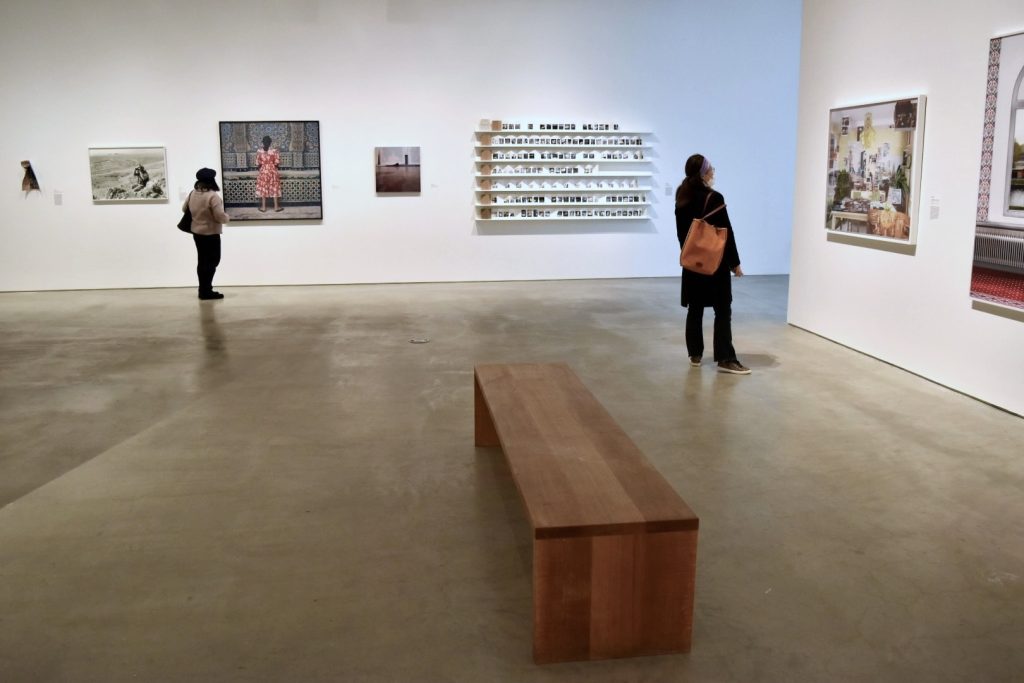
Installation view of “ICP at 50.” Photo by Ben Davis.
That pragmatic background is worth noting, because if the story “ICP at 50” is telling is all about vibing with the “broader sense of how photography is being used today,” it clearly crops out one of the broader ways that contemporary audiences relate to photos—the one closest to “concerned photography.”
Digital media has changed many things, but the project of raising awareness via striking images continues. There are individual photos, like Getty journalist John Moore’s heart-wrenching 2018 picture of a terrified toddler at the U.S.-Mexico border, that capture a moment and have great impact. More importantly, the decade of Black Lives Matter saw images of police brutality, captured mainly by citizen journalists and bystanders with cellphones, detonate massive protests. And right now, public opinion is being shaped by tragic images coming out of Gaza, both from professionals (often working at tremendous risk) and from ordinary Gazans sharing images of the horror they are living through.
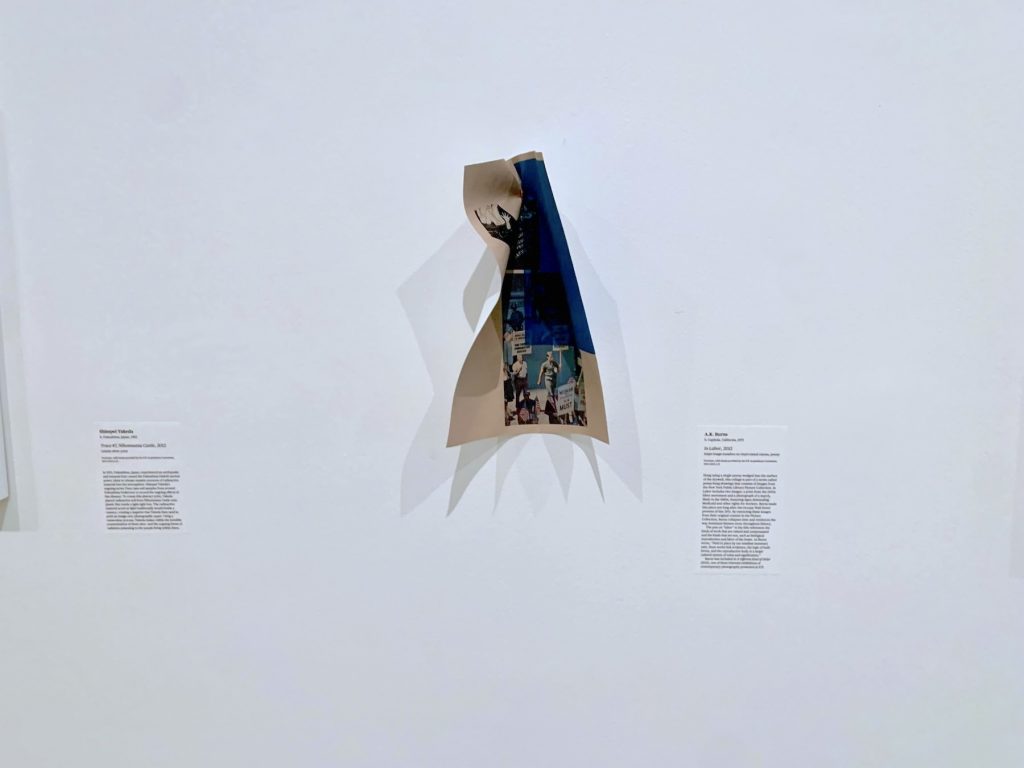
A.K. Burns, In Labor (2012) in “ICP at 50.” Photo by Ben Davis.
Douglas Crimp was talking about a “crisis” for museums at the level of theory, as art and photography blurred together. When it comes to a mid-sized, financially delicate institution like ICP, the leveling of categories is also ultimately a practical problem, in terms of defining a clear and distinct pitch to the public, in a world where there is fierce competition for fragmented attention spans. And this show’s conclusion leaves me still asking the questions that I walked in with: What is the project of a photography-specific museum now? Is it just an art museum without paintings?
Don’t get me wrong: There’s something to love in almost all the parts of the story “ICP at 50” tells. Please go see this show! It would be easy to take for granted that a physical space exists where you can discover such a rich collection of historically resonant images, and be inspired to debate what they mean. Nevertheless, it seems significant to note that the overall effect of this selection from the International Center of Photography’s collection is something like looking through a camera as someone turns the lens, watching the category of “photography” come into crisp focus—and then go out of focus again and dissolve into a blur.
“ICP at 50: From the Collection, 1845-2019” is on view at the International Center of Photography, New York, through May 6, 2024.